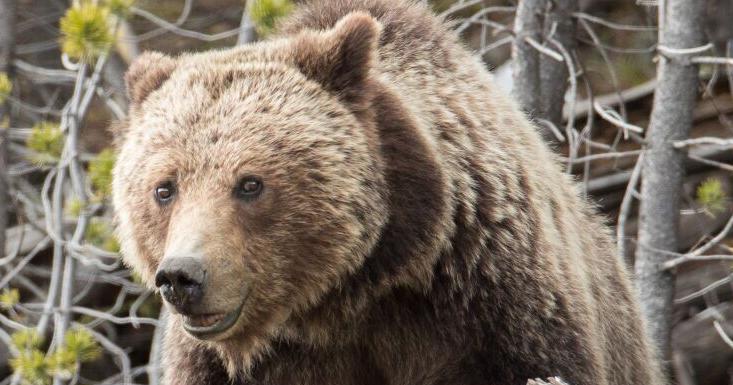Grizzly bear enthusiasts and ranchers in the Madison Valley have a common goal – conserving the open landscape that is vital for both the bears and the ranchers to thrive.
Grizzlies are expanding beyond the Greater Yellowstone Ecosystem, a fact acknowledged by the Madison Valley Ranchlands Group. A recent game camera image captured a sub-adult grizzly in the Tobacco Roots west of McAllister.
The ranchlands group is seeking funding to reduce grizzly conflicts and enhance existing efforts to promote coexistence with the bears.
This funding could support the implementation of electrified mats at gate openings to deter grizzlies from entering conflict areas, as well as the deployment of electric fences, range riders, and the transport of cattle carcasses to compost facilities.
People are also reading…
The Madison Valley Ranchlands Group previously supported a range rider program to monitor livestock and predators, including grizzlies and wolves.
John Crumley, president of the ranchlands group, noted the success of the range rider program.
The objective is to foster coexistence between cattle producers, other landowners in the Madison Valley, and carnivores.
Linda Owens, project director for the Madison Valley Ranchlands Group, emphasized that avoiding conflicts with grizzlies benefits both the bears and the ranchers, who are integral to the landscape of the Madison Valley.
The U.S. Department of the Interior and the National Fish and Wildlife Foundation have allocated funding to Montana Fish, Wildlife & Parks to support efforts by agricultural producers to prevent conflicts with grizzly bears.
Additional funding will be provided to Montana through a grant from the Natural Resources Conservation Service’s Regional Conservation Partnership Program to the Heart of the Rockies Initiative, a nonprofit in Missoula.
The Madison Valley Ranchlands Group and other collaborative groups focused on preventing conflicts between wildlife and livestock will receive a portion of this funding.
An event hosted by the Heart of the Rockies Initiative and the ranchlands group, with flight support from EcoFlight, aimed to promote non-lethal strategies for reducing conflicts in the region.
EcoFlight uses small aircraft to advocate for preserving wildlands and important landscapes.
Levi Chandler, manager of Valley Garden Ranch, noted more issues with wolves than bears on the ranch.
Grizzly bears have a keen sense of smell, making them attracted to dead livestock. The Madison Valley Ranchlands Group offers carcass removal and composting services to prevent such conflicts.
Various landowner-led groups in Montana, including the Blackfoot Challenge and the Big Hole Watershed Committee, have implemented measures to reduce conflicts with grizzlies.
Collaborative efforts involving agencies and organizations aim to minimize conflicts with grizzlies dispersing into different ecosystems.
Non-lethal methods, such as electrified mats and fences, are being used to manage bears and reduce conflicts. Ongoing innovation is crucial for effective bear management.
Landowner-led groups like the Blackfoot Challenge have played a key role in tackling large-scale landscape challenges in Montana.
Despite varying opinions among members, the Madison Valley Ranchlands Group aims to promote coexistence with grizzlies and wolves, emphasizing their importance as public resources on the landscape.





